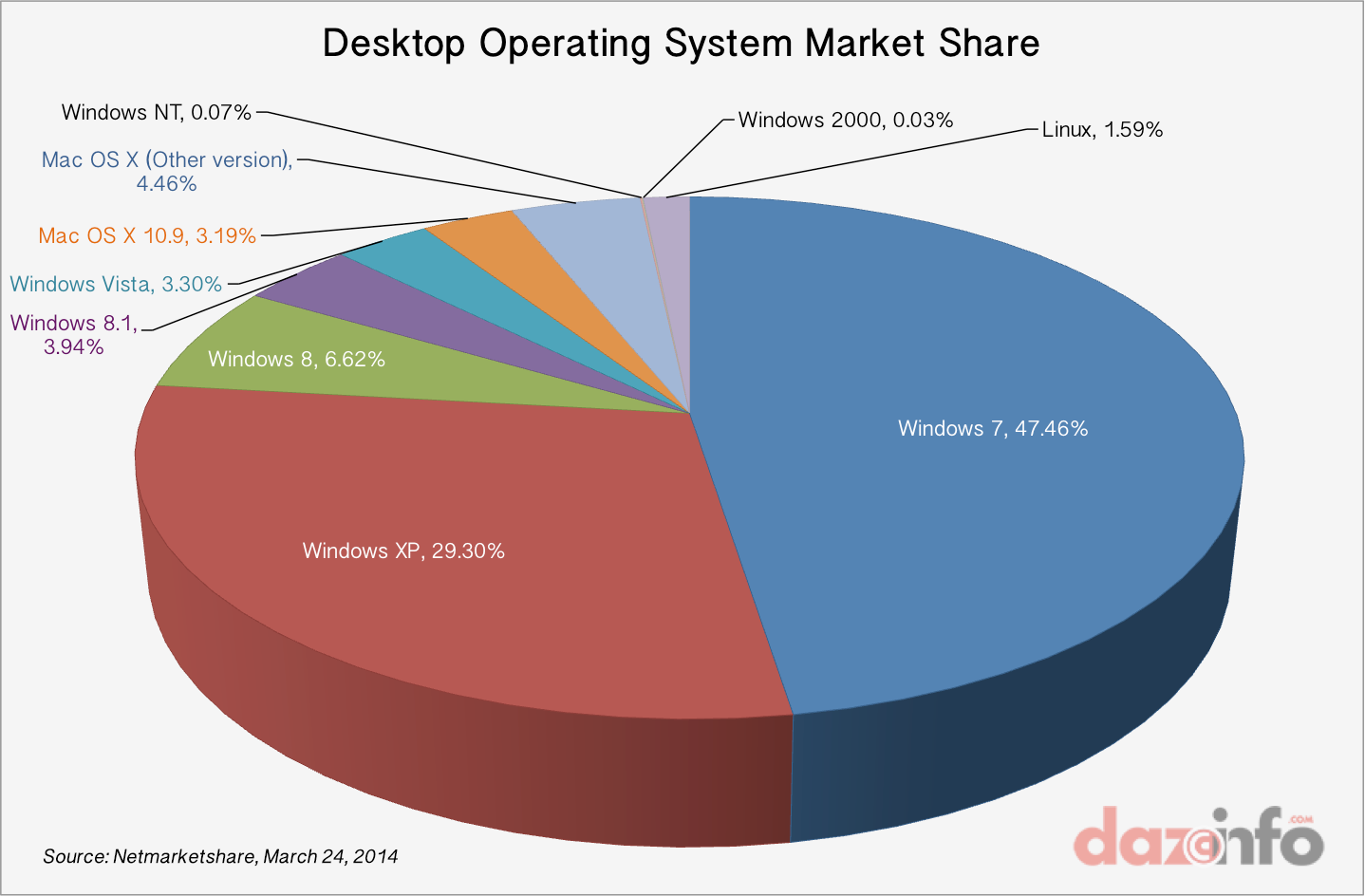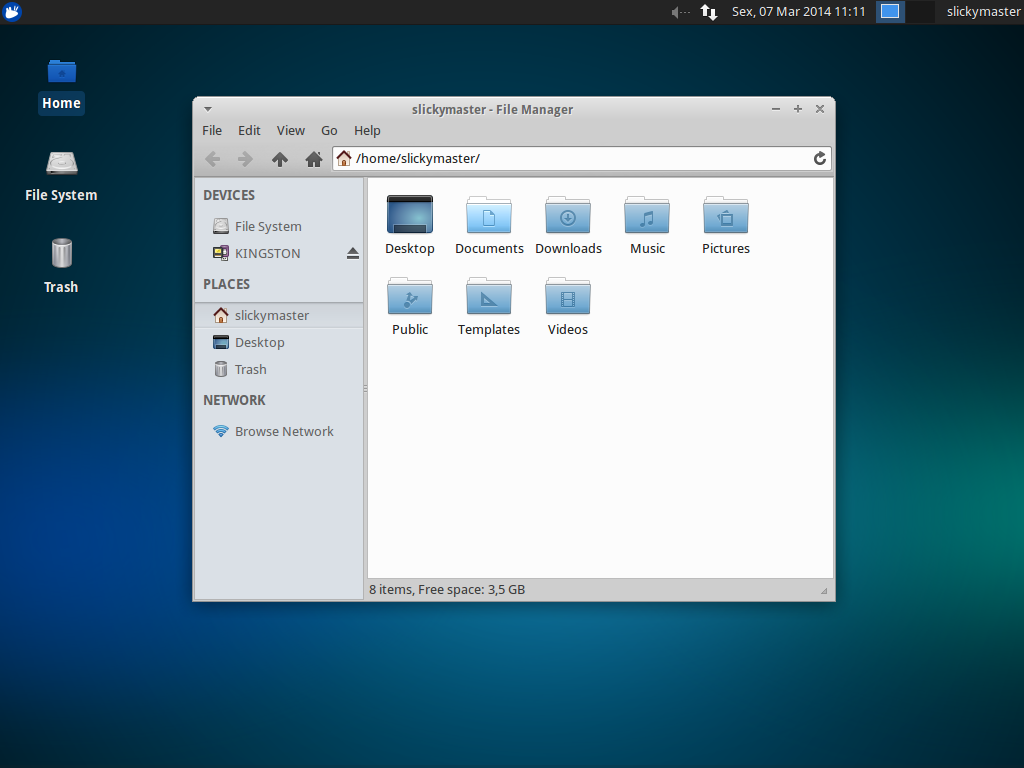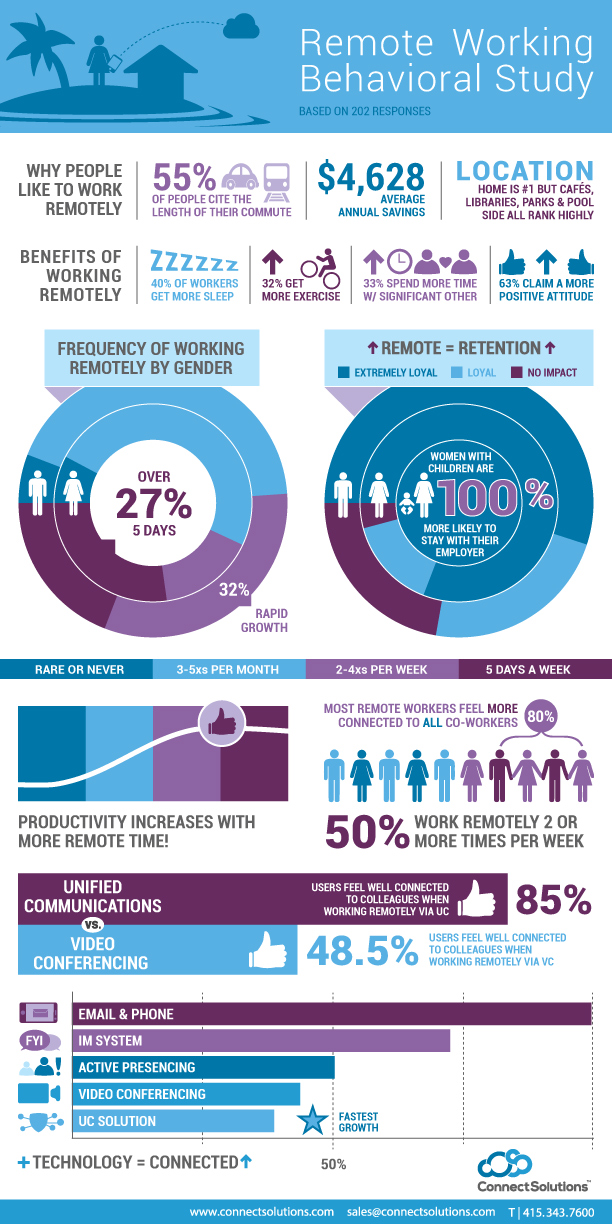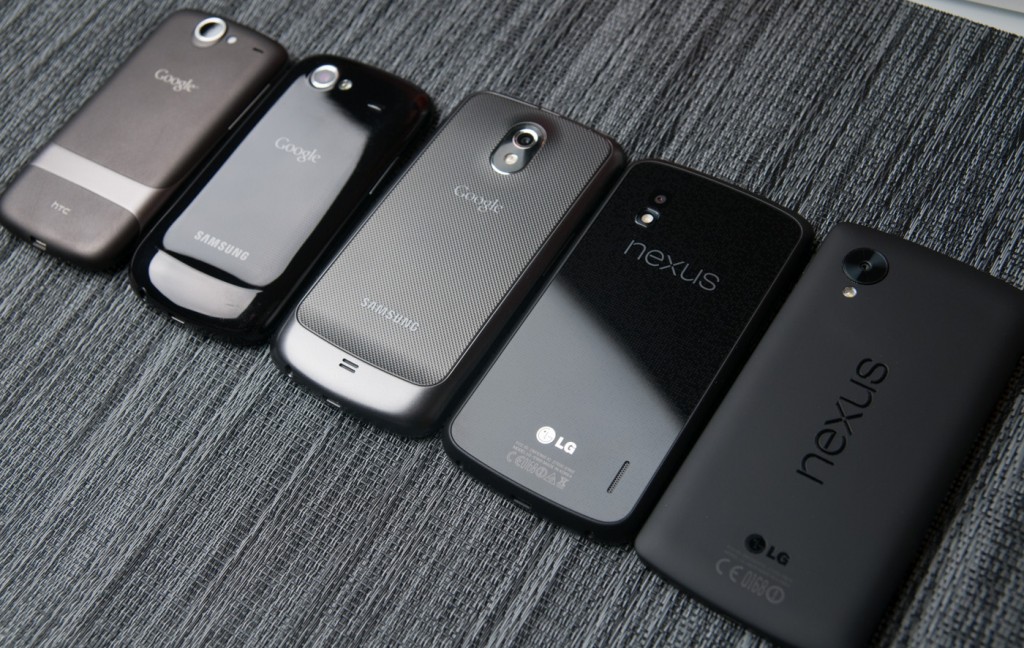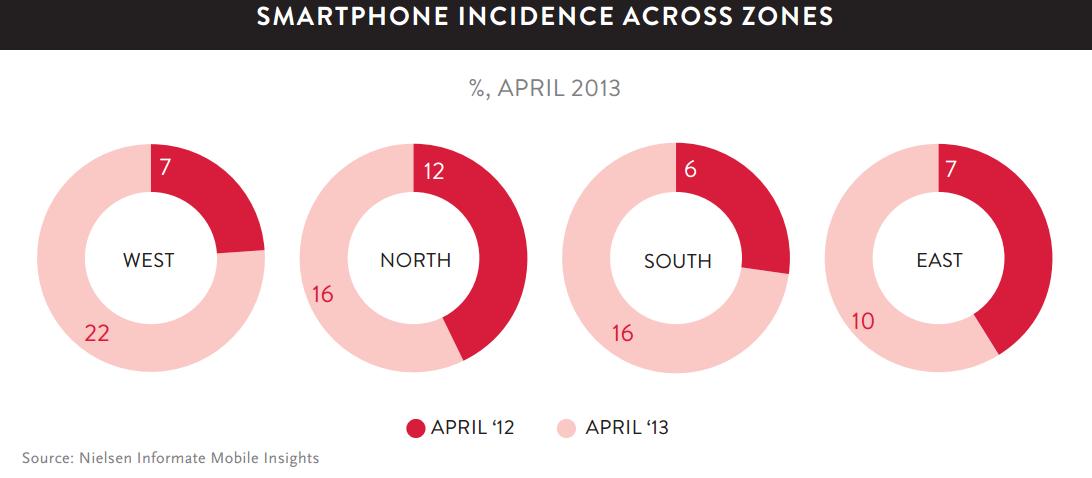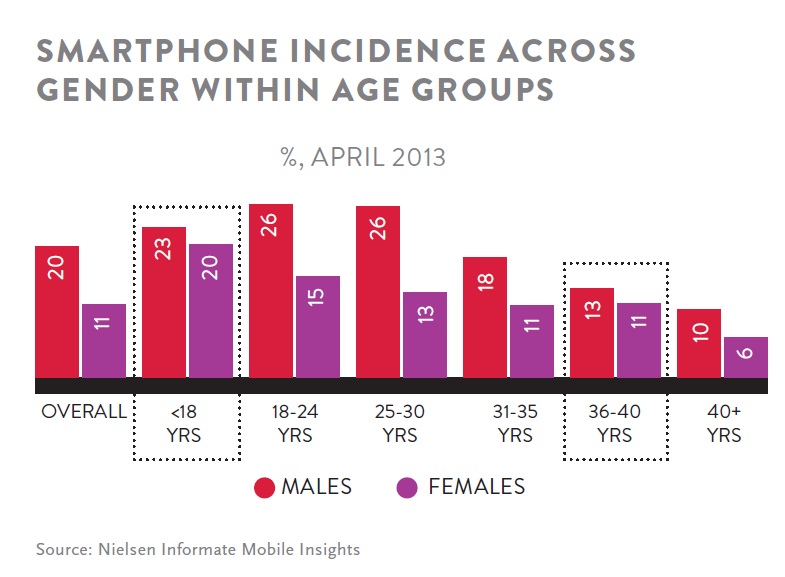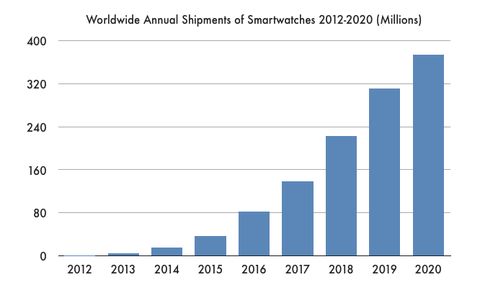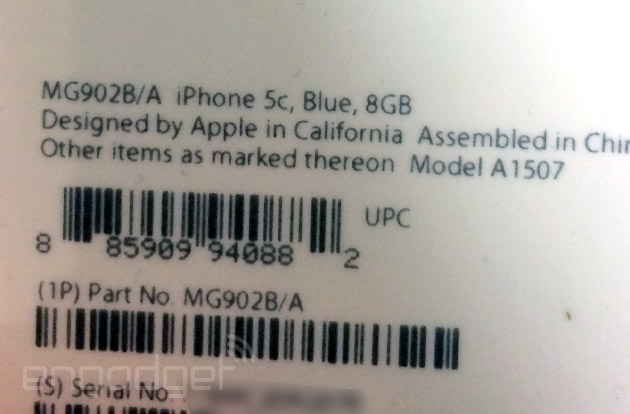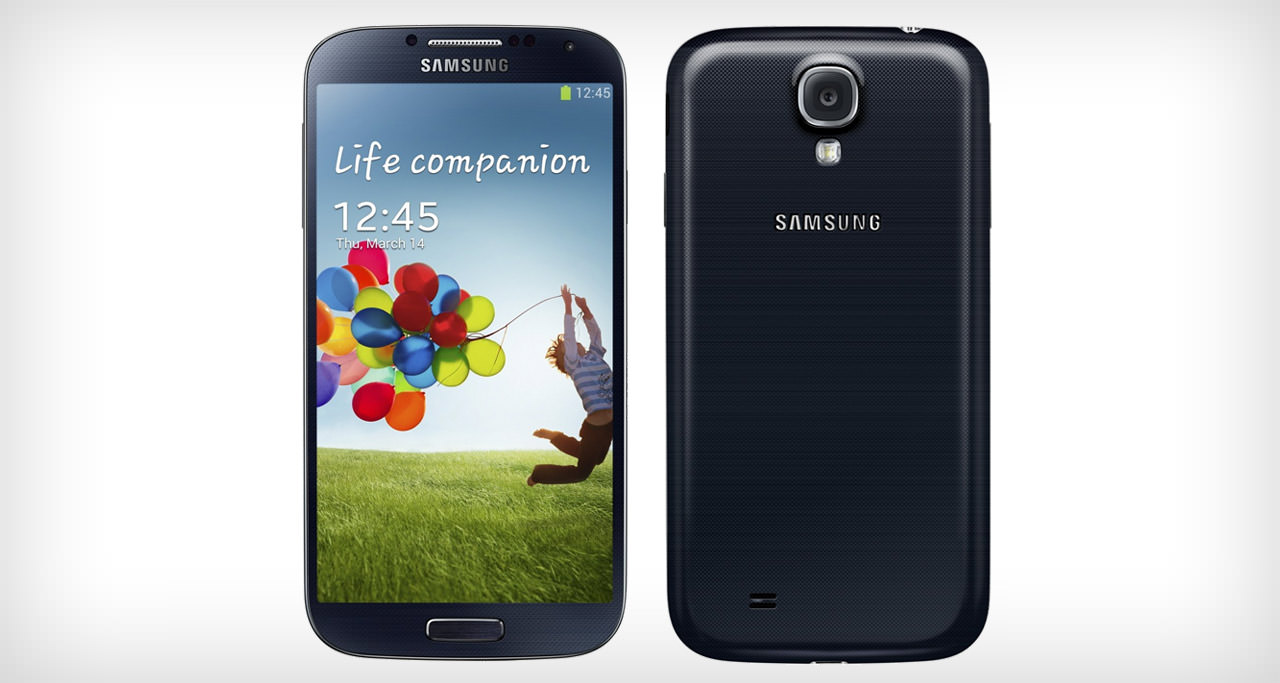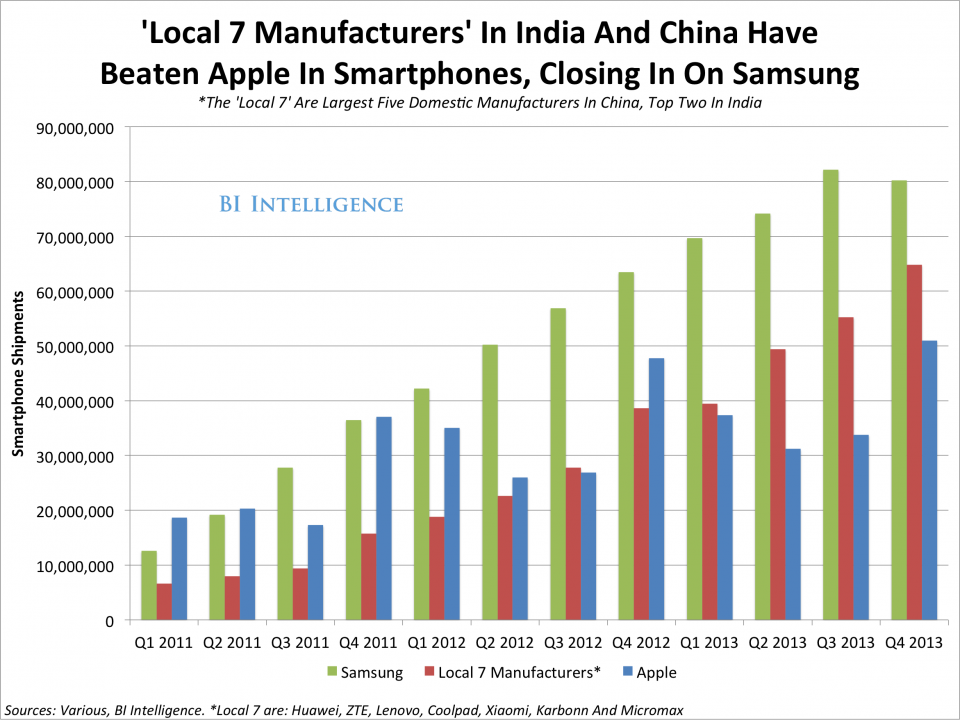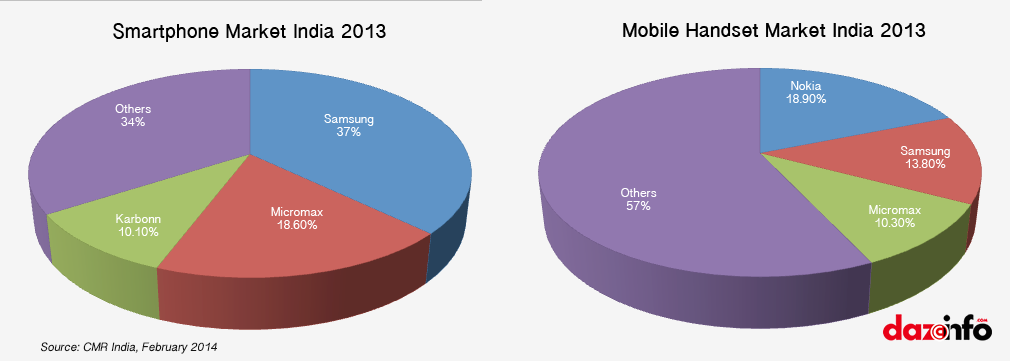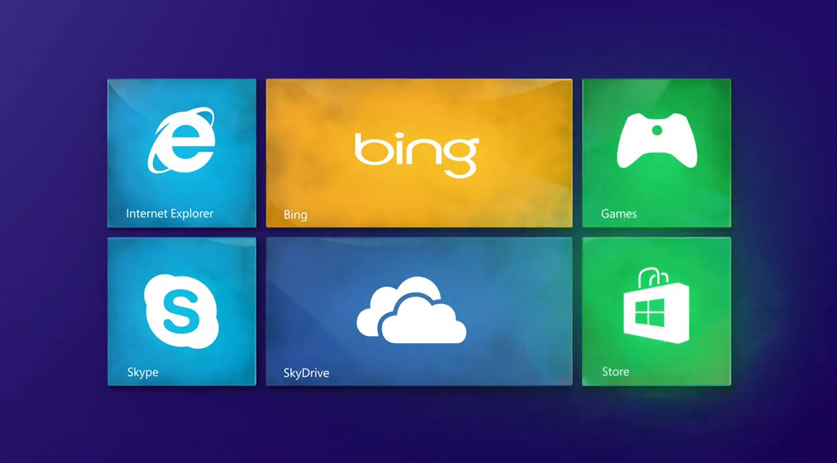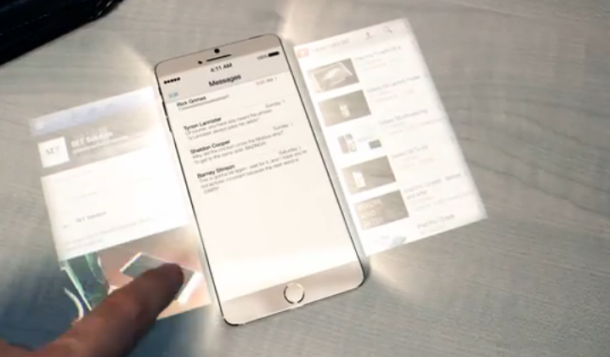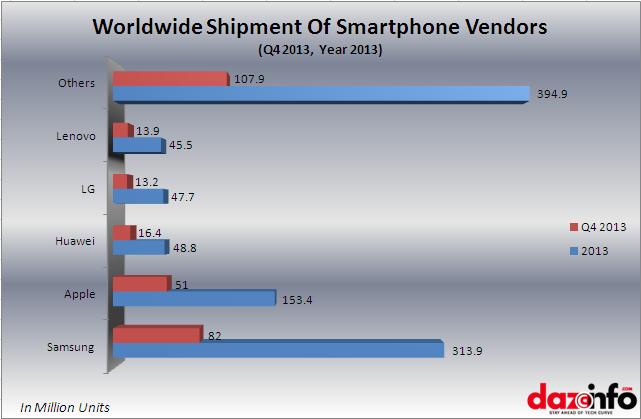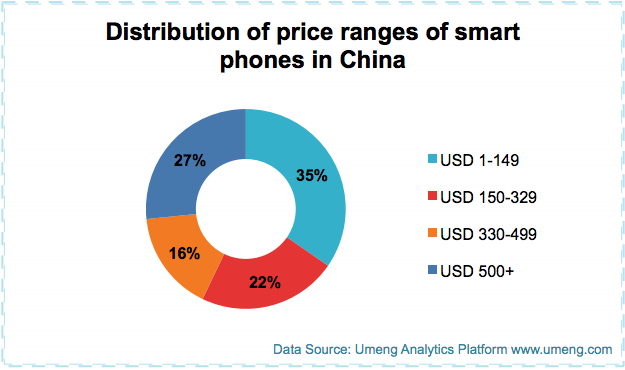Microsoft Corporation (NASDAQ:MSFT) Windows XP has had a glorious run, and has been the most successful Desktop OS in the history of Microsoft or indeed any other Desktop Operating System. This is especially impressive if one considers that despite having been had launched in 2001 it still has an impressive market share of 29.3%, as of March 2014, of connected PCs or 550 million odd PCs. Considering a lot of older PC’s may not be even connected to the Internet could bump that number even higher.
Though Microsoft has long attempted to migrate users from this venerable legacy OS, first disastrously using Vista, followed by a much better effort in Windows 7 and more recently to Windows 8, a huge number of holdouts simply refuse to let go of their familiar OS, often ignoring some real shortcomings in terms of security, stability and modernity. Over the years Microsoft has released numerous service packs, security patches that let Windows XP be compatible with newer technologies, hardware and standards. This helped the old fellow keep pace with newer OSes from Microsoft’s own stable as well as the ones from Apple Inc. (NASDAQ:AAPL) and to a lesser extent from Linux-based installations.
However come April 8, 2014, and Microsoft pulls the plug on XP Support, which means no automatic updates and no Security Essentials. Microsoft would of course like you to do one of the following things:
- Upgrade your current PC (difficult for notebooks) to run Windows 8.1 or
- Get a new PC altogether with Windows 8.1 preinstalled.
It doesn’t’ take a genius to realize that both are rather pricey alternatives.
If this was the situation a couple of years back, where there was an absolute Microsoft monopoly, the general user wouldn’t have had much of an option. MacOS demands a dedicated and expensive Apple hardware and Linux was simply too geeky, and availability/support for alternative software was almost non-existent. In the last 14 years, a lot has happened. Online security threats and have become considerably more sophisticated, Internet services such as hosted applications and Social Networking has taken off, and the desktop with its locally stored applications and data is increasingly irrelevant. The Smartphone/Tablet platform along with their App ecosystems have evolved to an extent that a lot of people simply do not feel the need of a dedicated PC to get their fix of media consumption and personal computing. The Phone IS the computer these days.
So what do you do if you have a perfectly operational albeit aged PC that still serves as the primary device for things such as word processing, email, accounts, spreadsheets and other activity that requires the use of a full-fledged keyboard? Now is a good time to mention that if familiarity with the XP OS is the key issue that holds you back from migrating to Windows 8.1, which will look and feel like a completely different OS, your best option is now probably Ubuntu Linux. Not just the standard Ubuntu Linux,, but the lightweight version called Xubuntu.
Xubuntu OS: For Die-Heart XP Lovers
Xubuntu is a distribution of Ubuntu, which uses the same architecture and software repositories as the mainstream Ubuntu. The only difference is that in the regular Ubuntu distribution, it uses a GUI called Unity, which is much more Mac OSX like, whereas Ubuntu uses XFCE which resembles a prettier version of XP. Alternatively, you could also check out Linux Mint, which pretty much feels exactly like Vista, but I stick to Xubuntu due to better Cannonical support – the People behind Ubuntu). Xubuntu is incredibly stingy on resources, and can run smoothly on a Pentium 4 or higher with a measly 512MB of RAM. Recommended specs being any Dual Core Intel/AMD CPU with 1GB of RAM.
So what has changed in the Linux world, that it makes it a worthy alternative to XP now? 2 things, Ease of Use and, Software.
There used to be a time, that in order to make Ubuntu or any Linux distribution work properly, you needed some basic knowledge of the UNIX file system and architecture, and that meant knowing some text commands as well which made it the domain for nerds and geeks. On top of that, hardware support was terrible and getting supported drivers was a challenge. It’s a lot different now. The installation process for Ubuntu/Linux Mint, is probably simpler than Windows these days. Drivers are automatically detected, and configured, and downloaded, as far as you are connected to Internet, if they are not present. Updates happen automatically just like they do under Windows, which, of course, does not apply to pirated versions. Linux is free, so the question of piracy doesn’t arise.
In terms of Software, pretty much every thing you need for personal computing is available. Cross platform editions of the software that you’re used to under Windows, are freely available for Ubuntu. Some of them are VLC (Media Player), Google Chrome/Mozilla Firefox (Browsers), Skype/Viber (VoIP and IM), Dropbox (Cloud Sync), Adobe Reader and so on. For other software there are either good Linux alternatives. For instance in place of iTunes, I use a media manager called Clementine. The Ubuntu Software Center is like the Google Play store for Ubuntu apps. You can find a plethora of various Ubuntu software. Another good news for Gamers is Ubuntu supports Valve’s Steam and online marketplace of commercial games. The point I am trying to make here is Xubuntu is equally simple and user-friendly to install, manage and use like other popular operating systems, especially Windows XP.
However some things in life may not be completely replaceable. There are people who are simply too used to certain Windows-only packages such as Microsoft Office or Tally and may be apprehensive to make the shift. LibreOffice might be an excellent alternative, but it’s not Microsoft Office. The good news is that now certain native Windows program can run seamlessly under Ubuntu using a program called Crossover, which utilizes WINE, an emulation layer under Linux. Also People might be used to the Microsoft standard font which are not available by default under Ubuntu, but a quick search for Microsoft Font packs in Software Center fixes that. Finally all browser based sites and applications such as Facebook, Gmail, Google Apps etc look and feel exactly the same they do under Windows. It also uses the exact same keyboard shortcuts and Menu Structure as Windows.
Xubuntu is thereby highly recommended and inexpensive (FREE!) alternative to Windows XP. And to think, you will never suffer a virus attack or a BSOD just sweetens the deal, so go ahead and download and install. Once you get used to it you’ll notice some incredibly handy features such as Virtual desktops, IM/Social desktop integrations and notifications, which will surely make you question why did you not make the move earlier.

